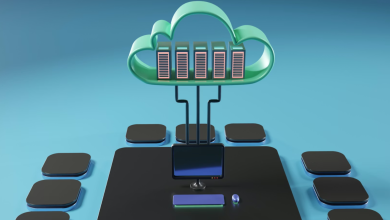
The way software is built and delivered has changed drastically in recent years. Teams now rely on global ecosystems of tools, libraries, and cloud services to create and distribute software faster than ever. But this speed comes at a cost. Modern software distribution channels have become one of the favorite targets for cybercriminals. Compromising a distribution pipeline can give attackers access to thousands of systems in one move. In 2025, securing software delivery means more than just scanning for bugs; it’s about protecting every link in the chain, verifying every file, and earning user trust through proven authenticity.
Understanding Software Distribution Channels
A software distribution channel is any platform or system that helps deliver software to users. It includes direct downloads from a company’s website, mobile app stores, cloud repositories like GitHub, container registries such as Docker Hub, and enterprise-specific deployment systems. Each of these channels is a possible entry point for attackers if not properly secured.
Take GitHub as an example. It’s a hub for millions of open-source projects, but attackers have learned to inject malicious dependencies or upload fake versions of popular tools. Similarly, fake app stores and compromised mirrors have distributed malware disguised as legitimate updates. This is why organizations must secure every stage, from the build system to the download link, to maintain integrity and protect end users.
The Evolving Threat Landscape
The growing number of supply chain attacks has shown how dangerous insecure software distribution can be. Incidents like the SolarWinds breach or dependency hijacking attacks on npm packages proved that hackers no longer target just end users; they go straight for the developers. By compromising an update server or inserting malicious code during packaging, attackers can infect thousands of users without their knowledge.
Fake installers, modified binaries, and unverified publishers are becoming more common. Social engineering also plays a part, tricking users into trusting lookalike sites or update notifications. Many of these attacks exploit weak authentication or the absence of verified identities, which is why trust-based mechanisms like code signing have become essential.
Why Code Integrity Is the Heart of Secure Distribution
Code integrity means making sure that a piece of software is exactly what the developer released; untouched, unmodified, and safe to run. When integrity is lost, so is trust. A single tampered file can expose customer data, damage reputation, or even lead to legal consequences.
History offers painful examples. The NotPetya attack spread through a compromised software update, while other cases involved modified installers spreading ransomware through official channels. Protecting code integrity is not just good practice; it’s the foundation of secure software delivery.
The Role of Code Signing Certificates in Software Trust
Code signing certificates are digital credentials that verify a developer’s identity and protect the integrity of their software. When a program is signed, it carries a cryptographic signature that tells the operating system and user that the software comes from a verified publisher and hasn’t been altered.
There are two main types of certificates: Standard and EV (Extended Validation). Standard certificates confirm the publisher’s identity and prevent “unknown publisher” warnings. EV certificates, however, go through a much deeper verification process. They provide higher trust levels and help with SmartScreen reputation on Windows, reducing false warnings and blocking tampered versions.
In short, EV Code Signing Certificates act as a digital seal of authenticity. For any developer distributing software publicly in 2025, using an EV certificate is no longer optional; it’s a clear sign of credibility and security.
Here’s that section rewritten with clear lists for better readability:
Implementing EV Code Signing in Your Workflow
Adding EV Code Signing to your software pipeline doesn’t have to be complex. Most modern CI/CD systems can handle the process automatically. Here’s how you can integrate it effectively:
Implementation:
- Integrate Signing into CI/CD Pipelines – Configure your build process to automatically sign applications during the final build or release stage.
- Use Secure Hardware for Key Storage – Store your private keys in HSMs (Hardware Security Modules) or USB tokens. These devices keep your keys safe from extraction or misuse.
- Automate with Secure Access Controls – Limit who can trigger signing operations through role-based permissions in your CI/CD environment.
- Verify the Signature – Ensure each build generates a verifiable signature before it’s published or distributed.
Benefits:
- Meets the strict security standards of Microsoft, Apple, and other major ecosystems.
- Builds SmartScreen reputation over time, reducing “unknown publisher” warnings.
- Provides stronger identity validation through extended vetting by the Certificate Authority.
- Protects users from tampered or modified versions of your software.
- Establishes long-term trust and credibility across public platforms.
A Multi-Layered Approach to Software Distribution Security
While code signing protects authenticity, it’s only one piece of the puzzle. True software distribution security in 2025 demands a multi-layered approach.
Developers must secure their build servers, APIs, and endpoints using strong authentication and access control. Transmission of code and updates should always happen over encrypted connections using SSL/TLS. Hosting platforms and repositories should enforce security policies, run vulnerability scans, and use role-based permissions to control who can publish releases.
Dependency verification is equally important. Many modern attacks target open-source libraries, so using tools that verify checksums and known hashes helps detect tampering early.
Also Read: AI and Machine Learning Implementation Strategy for Enterprises
Monitoring and Post-Release Protection
Security doesn’t end when software is released. Ongoing monitoring ensures that distributed packages remain authentic. Developers can use hashes or cryptographic fingerprints to verify each version. Some companies are even experimenting with blockchain-based methods for transparent release tracking.
Unauthorized mirrors or modified binaries can appear online at any time, so regular audits and user reports are essential. Publishing transparency logs or checksum lists helps users verify downloads themselves, adding another layer of protection.
What Future Beholds?
Looking ahead, artificial intelligence and automation will play a major role in strengthening distribution security. Machine learning can help detect unusual signing behavior, identify compromised repositories, and flag potentially malicious builds before release. Zero-trust principles are also being integrated into DevSecOps pipelines, ensuring that every component and user must prove their identity continuously.
We may soon see widespread adoption of hardware-bound signing, quantum-safe algorithms, and automated developer identity verification – all aimed at creating an unbreakable chain of trust from developer to user.
Conclusion
Securing software distribution channels is one of the biggest challenges for developers today. From code integrity to encryption and monitoring, every step in the release process matters. EV Code Signing Certificates stand out as a crucial safeguard, ensuring that your software reaches users exactly as you intended.






